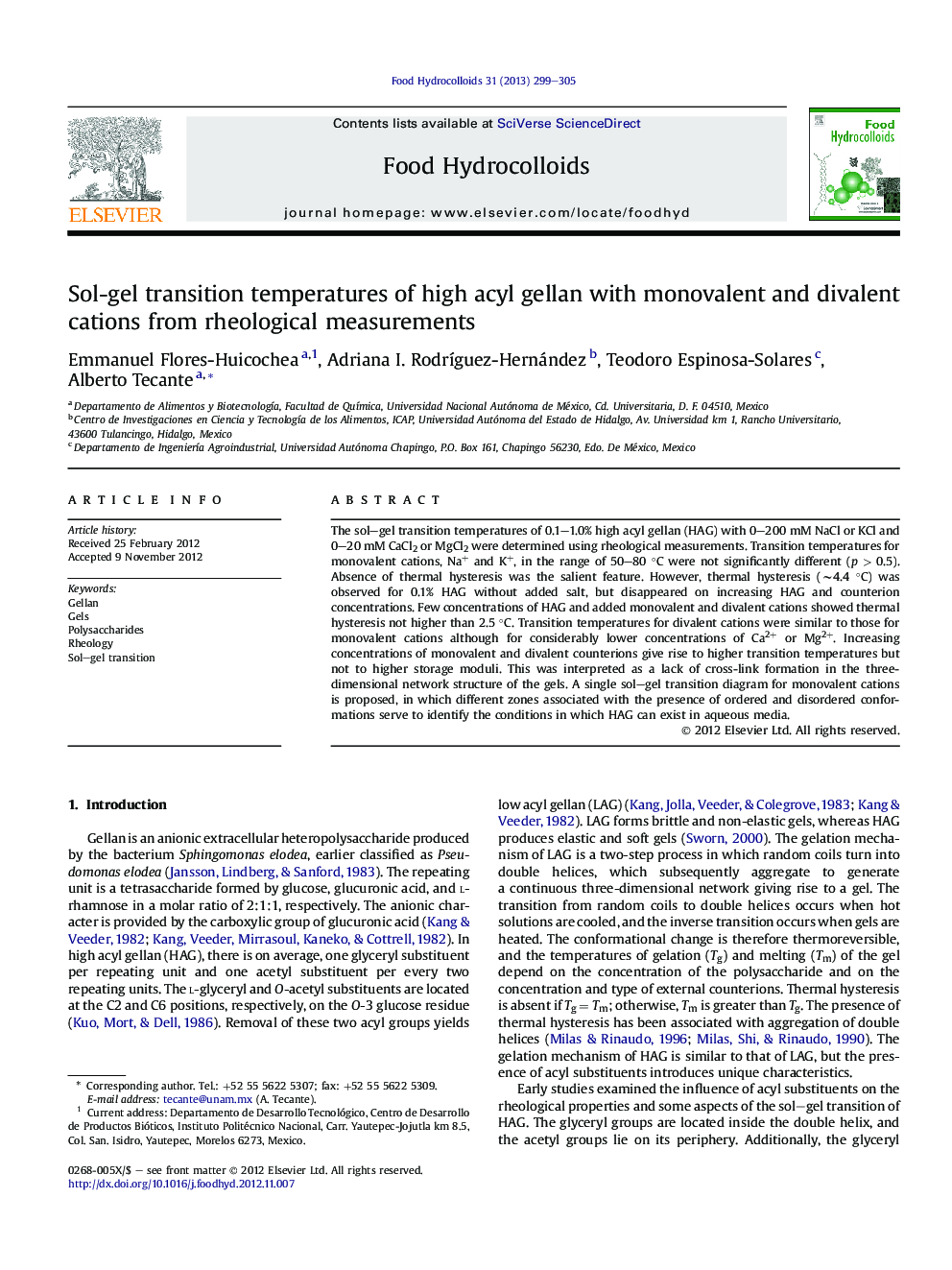| کد مقاله | کد نشریه | سال انتشار | مقاله انگلیسی | نسخه تمام متن |
|---|---|---|---|---|
| 605324 | 880343 | 2013 | 7 صفحه PDF | دانلود رایگان |

The sol–gel transition temperatures of 0.1–1.0% high acyl gellan (HAG) with 0–200 mM NaCl or KCl and 0–20 mM CaCl2 or MgCl2 were determined using rheological measurements. Transition temperatures for monovalent cations, Na+ and K+, in the range of 50–80 °C were not significantly different (p > 0.5). Absence of thermal hysteresis was the salient feature. However, thermal hysteresis (∼4.4 °C) was observed for 0.1% HAG without added salt, but disappeared on increasing HAG and counterion concentrations. Few concentrations of HAG and added monovalent and divalent cations showed thermal hysteresis not higher than 2.5 °C. Transition temperatures for divalent cations were similar to those for monovalent cations although for considerably lower concentrations of Ca2+ or Mg2+. Increasing concentrations of monovalent and divalent counterions give rise to higher transition temperatures but not to higher storage moduli. This was interpreted as a lack of cross-link formation in the three-dimensional network structure of the gels. A single sol–gel transition diagram for monovalent cations is proposed, in which different zones associated with the presence of ordered and disordered conformations serve to identify the conditions in which HAG can exist in aqueous media.
Figure optionsDownload as PowerPoint slideHighlights
► The divalent cations are more effective in promoting transitions than the monovalent cations.
► Lack of thermal hysteresis was the salient feature.
► Increasing the total ionic strength of monovalent or divalent cations promotes ordered and more stable structures.
► A transition diagram for monovalent cations makes it possible to identify which conditions give solutions and which give gels.
Journal: Food Hydrocolloids - Volume 31, Issue 2, June 2013, Pages 299–305